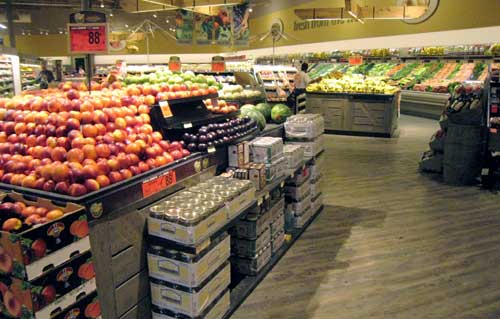You can save a lot of time and money by following our simple process for making your grocery list. (Oh yeah, and when you’re done, don’t leave it at home on accident!)
The essence of our strategy for saving at the grocery store is the widest array of things you can make with the fewest individual ingredients. Then just buy as much of them as you can and restock as you need them! Step one is just making a list of your most common kitchen ingredients. We all have favorites, so why not save a few minutes with a checklist? Ours is below so you can see what I mean.
When it comes time to go shopping your work is about half done for you. We keep a dry erase board in the kitchen, this one is only $6 with Amazon Prime. When you run out of one of your basics, just jot it down real fast. When it’s shopping time, copy down the list from the board and move on to part three!
Here’s what you should have in your kitchen pretty much at all times:
Seasonings
- Garlic Powder
- Onion Powder
- Salt
- Pepper
- Italian seasoning blend of some kind
- Cumin
- Cinnamon (Not a lot, but some for desserts and baked stuff.)
- Chili powder (For chili.)
We keep a bunch more, but when we talked about the different situations where Italian blend can substitute for several seasonings we agreed you can probably get by with just this to start. Anything else is cheap to buy fresh, and better anyway.
Fridge Stuff
- Minced Garlic (They’re usually pretty cheap, or huge and last forever.)
- Sriracha (The hot sauce with the rooster on it. Just a little adds great flavor to chili or asian dishes with not a lot of heat.)
- Butter
- Eggs
- A sourdough starter (It takes a bit of work to start, but it will keep going forever and make bread making way easy.)
- Soy sauce
Dry stuff
- Rice
- Some kind of pasta
- Cans of beans (Whatever you like, they’re good protien. There are good recipes for all of them.)
- Flour (I get mostly wheat flour and a tiny bag of white.)
- Wheat gluten (Yes, wheat gluten. Unless you have Celiac disease, the gluten-free trend is really stupid.)
- Sugar
- Bouillon cubes of some kind
- Olive oil
- Honey (A natural preservative for bread.)
- Masking tape and a sharpie (Label the food you make with dates so you don’t let leftovers go bad.)
Produce
- Onions
- Tomatoes
- Spinach and/or romaine lettuce (Iceberg lettuce is just water with a fiber chaser. Waste of money.)
- Potatoes (You don’t need the giant 10 pound bag, just a few is usually fine.)
- Mushrooms
Skip whatever you don’t like of course, but if you have this all in your kitchen at all times you’re pretty well set-up. Pretty much every recipe will use at least a few of these, and you can make a passable pasta, fried rice or basic Tex-Mex dish if you run out of food and don’t want to go to the store. This happens a lot for me, I’ll admit it!
Now that we’ve got the basics covered, the next part is the rest of the list. In the meantime, what’s on your must-have list? Let us know!



